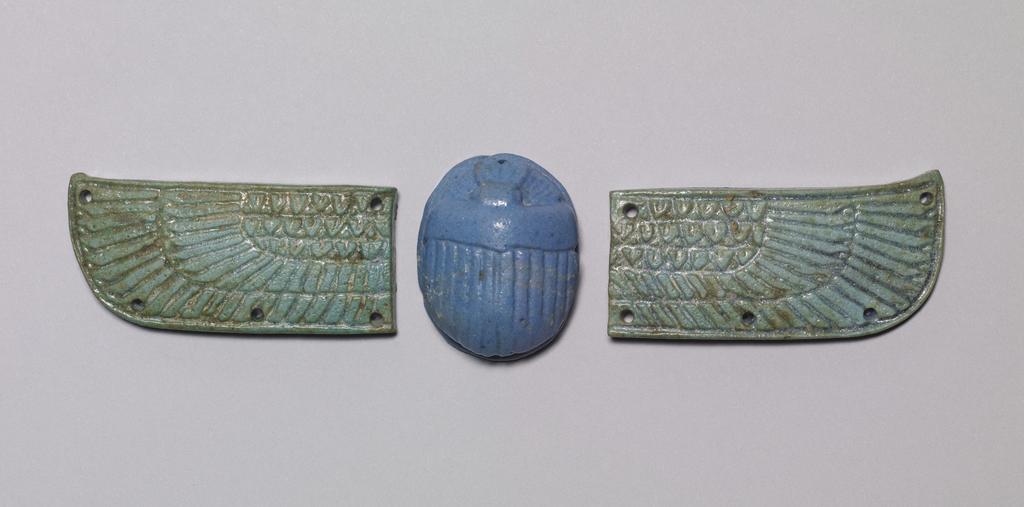MAKE A MEME
View Large Image

| View Original: | Egyptian_-_Scarab_with_Wings_-_Walters_42373,_481667,_481668.jpg (1799x891) | |||
| Download: | Original | Medium | Small | Thumb |
| Courtesy of: | commons.wikimedia.org | More Like This | ||
| Keywords: Egyptian - Scarab with Wings - Walters 42373, 481667, 481668.jpg A faience scarab amulet with a blue glaze In some areas the glaze is worn and the matrix of the material is visible The elements of the head and body have been formed in relief This type of scarab often had attachable wings The scarabs from this period are usually about 5 cm long and most often are blue in color An incised ridge along the lower side forms a narrow base Numerous funerary amulets were usually placed among the many layers of linen strips used to wrap mummies Specific amulets along with their required position on the body are listed in funerary texts such as The Book of the Dead Amulets were sometimes sewn directly onto the wrappings or could be incorporated into a bead net shroud covering the mummy These amulets have been modeled with a flat underside and are pierced by tiny holes around the edges for attachment The winged scarab is a potent symbol of resurrection and rebirth The protective deities represented are connected with the myth of Osiris between 1070 525 BC Third Intermediate-early Late Period faience with blue glaze cm 1 7 3 3 4 1 accession number 42 373 48 1667 48 1668 77455 Henry Walters Baltimore date and mode of acquisition unknown Walters Art Museum Henry Walters Acquired by Henry Walters place of origin Egypt Walters Art Museum license Ancient Egyptian scarabs in the Walters Art Museum Ancient Egyptian pectorals in the Walters Art Museum Media contributed by the Walters Art Museum needs category review | ||||